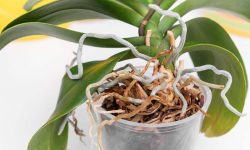Lillies are beautiful flowers that come in many different colors, shapes, and sizes. They are a popular choice for both indoor and outdoor gardens. Many people don’t realize that lilies are actually bulbs.
This means that they need to be planted in the ground in order to grow. Bulbs can be a little tricky to plant, but with a little patience and care, you can have healthy lilies blooming in no time!
Lilies are a beautiful and popular flower that come in many different colors. They are often given as gifts, and used in bouquets and arrangements. What many people don’t know is that lilies are actually bulbs!
This means that they can be planted and will grow back year after year.
If you have never planted a bulb before, lilies are a great one to start with. They are relatively easy to care for and grow quickly.
Planting them in the spring will give you blooms all summer long. Here are a few tips for planting your own lily bulbs:
– Choose a spot in your garden that gets full sun.
Lilies like lots of light!
– Prepare the soil by loosening it up and adding some organic matter such as compost or manure.
– Plant the bulbs about 8 inches deep and 12 inches apart.
If you’re not sure which end is up, plant them on their side – they’ll figure it out!
– Water well after planting, then keep the soil moist throughout the growing season.
Planting Lily Bulbs 🌺 How to Plant Lilies in the Garden
What to Do With Lilies in Pots After Flowering
After your lilies have flowered, don’t throw them out! With a little care, you can enjoy them for years to come. Here’s what to do with lilies in pots after flowering:
1. Cut back the spent flowers. This will encourage new growth.
2. water regularly and fertilize monthly.
3. Place the pot in a sunny spot outdoors. Bring it inside when temperatures start to drop in fall.
4. In spring, cut back the foliage and repot if necessary.
This will give your lily a fresh start for the new growing season.
Are Lilies Perennials
Lilies are a beautiful and popular flower that many people enjoy planting in their gardens. While lilies are often seen as annuals, they are actually perennials. This means that they will come back year after year with the proper care.
Here is some information on how to care for your lily plants so they will thrive for years to come.
When it comes to planting lilies, it is best to do so in the springtime. You will want to find a spot in your garden that gets plenty of sunlight and has well-drained soil.
Once you have found the perfect spot, dig a hole that is twice the size of the lily bulb. Be sure to loosen up the soil at the bottom of the hole so that the roots can easily spread out. Gently place the bulb in the hole and fill it back in with soil.
Water your lily plant well and continue to do so throughout its growing season.
Lilies prefer to be fertilized every two weeks or so during their growing season. A general purpose fertilizer should work fine, but you can also purchase one specifically for lilies if you prefer.
When applying fertilizer, be sure not to get any on the leaves of your plant as this can cause them to burn.
Once your lily blooms have faded, you can cut off the stems about an inch or two above ground level. However, leave any foliage intact as this helps nourish next year’s bulbs.
When to Plant Lily Bulbs
Lily bulbs are best planted in the fall, before the first frost. This gives them a chance to establish roots and start growing before the cold weather sets in. However, if you live in an area with mild winters, you can plant lily bulbs as late as January.
When choosing a spot to plant your lily bulbs, make sure it gets plenty of sun and has well-drained soil. If you’re not sure whether your soil is well-drained, dig a hole and fill it with water. If the water drains away within an hour or two, your soil is probably well-drained.
If it takes longer than that for the water to drain away, you may need to amend your soil with some sand or compost before planting.
Once you’ve chosen a spot and amended your soil (if necessary), dig holes that are twice as deep as the height of your bulbs. Plant each bulb pointed side up, and then cover them with soil and water well.
Asiatic Lily in Pots
If you want to add a touch of elegance to your porch or patio, consider planting Asiatic lilies in pots. These lovely flowers are available in a wide range of colors, and they’re easy to care for. Here’s what you need to know about growing Asiatic lilies in pots.
Asiatic lilies are native to Asia, and they’ve been cultivated for centuries. They were first introduced to Europe in the 18th century, and they’ve been popular in gardens ever since. Today, there are hundreds of different varieties of Asiatic lilies available.
Asiatic lilies grow from bulbs, and they prefer well-drained soil that’s rich in organic matter. They like full sun, but they can also tolerate partial shade. When planting Asiatic lilies in pots, choose a pot that’s at least 12 inches wide and 12 inches deep.
Be sure to use a quality potting mix that includes perlite or vermiculite for drainage.
Water your lily plants regularly during the growing season, but allow the soil to dry out between waterings. Fertilize your plants once a month with a balanced fertilizer such as 10-10-10 .
In late summer or early fall, stop fertilizing and watering your plants so that the bulbs can go dormant over winter. Store the bulbs in a cool (but not freezing), dark place until springtime.

Credit: www.americanmeadows.com
Are Lilies Seeds Or Bulbs?
Lilies (Lilium spp.) are flowering plants that come in a wide range of colors, including white, yellow, orange, pink and red. They are a popular choice for gardens and cut flowers alike. Lilies are easy to grow and care for, making them a great option for both novice and experienced gardeners.
Most lilies grow from bulbs, which are underground storage organs comprised of fleshy scales. Each scale contains all the necessary information to produce a new lily plant. Some species of lily, such as tiger lilies (Lilium columbianum), do produce seeds.
However, these seeds are often sterile and will not germinate without special treatment.
Are Lilies Plants Or Bulbs?
Lilies are a type of flowering plant that typically grow from bulbs. There are many different species of lily, and they come in a variety of colors, shapes, and sizes. While most lilies prefer sunny locations with well-drained soil, some species can tolerate shade or even wet conditions.
Is a Lily Grown from a Bulb?
Yes, lilies are grown from bulbs. Bulbs are underground storage organs that contain all the nutrients a plant needs to grow. When conditions are right, the plant will sprout and grow into a new lily.
Are Lilies Roots Or Bulbs?
Lilies (Lilium spp.) are flowering plants that grow from bulbs. Most lily bulbs are underground, but a few species have above-ground bulbs. The bulb is composed of fleshy scales that store food for the plant and help it to survive periods of dormancy.
Each scale has a small bud that will produce a leaf or flower when the plant breaks dormancy and begins to grow.
Lilies reproduce both sexually and asexually. They produce seeds in their flowers, which are pollinated by bees and other insects.
The seeds germinate and grow into new plants. Lilies also produce offsets, small bulbils that form on the sides of the mother bulb. These offsets can be removed and planted to form new plants.
Are Orchids and Lilies Both Considered Bulb Plants?
Orchids and lilies differ in how they reproduce: orchids produce seeds, while lilies are considered bulb plants. So, although both are admired for their beautiful blooms, orchids and lilies have distinct reproductive strategies. While orchids propagate through seeds, lilies spread by growing from bulbs. Thus, when it comes to orchids: bulbs or seeds, they are primarily seed-producing plants.
Conclusion
Lillies are not bulbs, but rather they are rhizomes. A rhizome is a thickened stem that grows horizontally just below or on the ground surface. The lily’s roots grow down from the bottom of the rhizome and its leaves and flowers grow up from the top.






